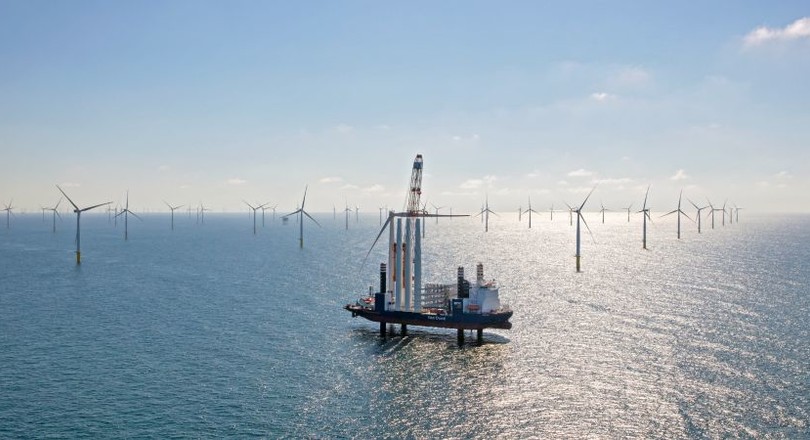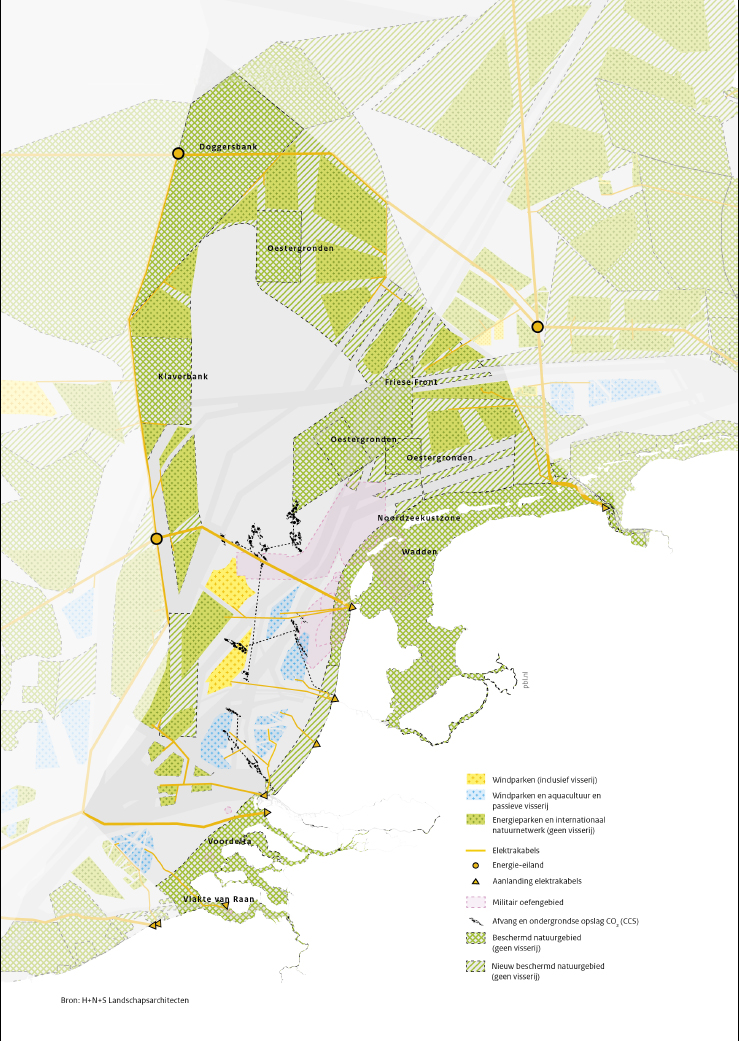
Space on the North Sea for large-scale wind farms
The North Sea has plenty of space for large-scale wind farms, according to the Netherlands Environmental Assessment Agency (Planbureau voor de Leefomgeving, or PBL). The number of areas designated as nature reserves could also increase significantly. But that's only possible with stringent controls, as things are busy on the water.
Wind at sea for generating sustainable energy makes for very good news these days, especially now that many projects will have to succeed unsubsidised going forward. But is there really space for realising these large-scale ambitions? After all, the North Sea accommodates shipping lanes, conservation areas, military exercise areas, oil and gas platforms and a network of cables and pipes on the seabed.
But just how large these ambitions for the North Sea could be, was demonstrated last year during the International Architecture Biennial, where a plan was presented for erecting tens of thousands of wind turbines.
60 GW of wind power
The Netherlands Environmental Assessment Agency (PBL) has listed all claims for space in the North Sea and concluded: it's possible. There is space for the maximum scenario of 60 GW of wind power. That equates to some 12,000 turbines with a capacity of 5 MW. At present there is 1 GW of wind power at sea.

In that maximum scenario, the wind farms will take up a fifth of the total Dutch North Sea area. That number is based on a power density per km2 of 4 to 6 MW. In comparison: the Gemini wind farm off the coast of Groningen has a power density of 9 MW per km2. The Agency is thus applying a conservative estimate here. If in the end there is more power per km2, then a smaller area is required or there is room for more turbines in the reserved zone.
More protected nature reserves
Strikingly, the Agency also sees scope in the maximum scenario for a significant expansion of protected nature reserves in the North Sea. Fishing is prohibited there and other disruptive activities are banned. However, the Agency is partly compromising this status by also permitting wind turbines in part of the new conservation areas. But we now know that once the wind turbines have been erected, they barely have any detrimental effect on the biotope, or may even improve it due to the introduction of solid elements in the water. However, wind turbines do lead to the deaths of birds and bats. The greatest disruption occurs during construction of the wind farms, especially when pile driving the foundations into the seabed. A solution will therefore have to be found for this, and that's already being worked on.

Fewer fishing grounds
The party that will have to take the biggest hit is the fishing industry. But that has less to do with wind farms, and more to do with Brexit: Dutch fishermen will probably no longer have access to the teeming British waters. However, wind farms must be erected outside the strategic fishing grounds. But limiting of the fishing areas is only a good thing for fish stocks. At the same time, there will be more space for fish farming and aquaculture (seaweed cultivation). The latter of these could also coexist with wind turbines.
The Agency is therefore arguing for easing the strict separation between the different functions on the water – such as wind farms in nature reserves or certain types of fishery around wind turbines. ‘Without this mixing of functions, we'll never manage it’, the text states.
Cable spaghetti
What the Agency writes about cables on the sea floor is particularly noteworthy. Given the increasing capacity demand for telecommunications (internet), these cables could – in the most extreme case, with all the related spatial reservations – take up half the sea floor. Bundling into cable lanes is then urgently required, according to the Agency.
If you found this article interesting, subscribe for free to our weekly newsletter!
Meer artikelen

Een AI-fabriek in Groningen

Gezondheid meten via zweetdruppels
Nieuwste artikelen

Een AI-fabriek in Groningen






